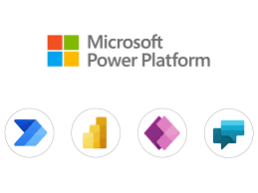Many organizations have heard of process mining. Some have considered it, while others have even tried it out. However, only a few have successfully managed to embed the capability of process mining in their organizations. Still, some have never heard of process mining. What is it? What can it be used for? How does it work? And most importantly, how can it impact organizations and give them a competitive advantage?
What is process mining?
Process mining applies data science to discover, validate and improve workflows. By combining data mining and process analytics, organizations can mine log data from their information systems to understand the performance of their processes, revealing bottlenecks and other areas of improvement. In addition, process mining leverages a data-driven approach to process optimization, allowing managers to remain objective in their decision-making around resource allocation for existing processes.
Traditional business process management is done with process workshops and interviews, which results in an idealized picture of a process. Process mining, however, uses existing data available in corporate information systems and automatically displays the actual procedure.
What can process mining be used for?
There is great interest in process mining, so it is essential to understand how it helps companies and in which scenarios it can be a valuable asset.
Process optimization
Companies can use process mining for fast and accurate analyses of their processes. In addition, the insights generated make it easier to understand root causes of underperformance, such as:
- Process variability: How many different ways are there to get from the first to the last step of the process? Why are there so many different ways? Why is there not one way – the best way?
- Throughput times: How fast can this process be done on average? Why are there significant differences between the fastest way of doing things and the cases where it takes too long?
- Waste: Where in the process are manual activities that can be automated? Where is the process being interrupted and prevented from flowing seamlessly? Where are specific process steps being reworked because we did not get it right the first time?
- Supplier and customer impact: Which suppliers are causing the most inefficiencies in the process and how (e.g., multiple small invoices instead of a single consolidated invoice)? Which customers drive high sales processing costs (e.g., frequent order changes, returns, etc.)?
Process discovery for automation
To be able to apply automation, organizations need to identify and prioritize the processes most profitable and suitable for automation. After that, the impact of automation can be simulated before actual implementation, which would help build a well-founded business case. Finally, process mining enables an internal view of the automation maturities of the various functions, departments, and geographies, which can help focus the automation journey.
ERP migration/implementation
IT organizations can also use process mining to manage the complexity of Enterprise Resource Planning (ERP) migration, implementation, and deployment. For example, when organizations undertake a system transformation or implement a new ERP, the first step is always to understand the current process before designing and building new systems and processes. Without an end-to-end view, there is a risk of migrating the same ineffective processes into the new systems and not solving bottlenecks and problems during the migration.
After deployment, process mining can further help reduce costs in ERP maintenance, development, and support because it can help pinpoint mistakes or gaps in the IT systems and, of course, ensure that the designed systems are used as intended by the right users.
Performance management
Process mining allows easily measurable performance metrics that help create a solid baseline and a comprehensive performance monitoring dashboard. In addition, some tools come with a preconfigured library of Key Performance Indicators (KPIs). With such easy access to detailed and repeatable measurements, companies can spend their time taking actions instead of wasting time understanding and measuring processes.
Process simulation
Companies can make future predictions by mining their processes with the data gained from event logs. Their predictive analyses can be used to inform stakeholders and customers. Customers can, e.g., receive an accurate estimate of when their loan application will be processed.
Conformance validation/auditing
Companies can check if how processes are executed conforms to how they have been designed and are intended to function. Procurement decisions, e.g., need different approvals based on the purchase size and nature of the item purchased. Non-conforming cases, reasons for deviations, and conformance trends can be analyzed too. Companies can take action to reduce these deviations and ensure that corporate policies and guidelines are followed.
Organizational insights
Process insights can identify organizational relationships, performance gaps, and internal best practices. Because almost all processes have a human component, it also helps to understand how people are using the systems and how many employees are involved in the execution of a process – often revealing shocking consequences for the internal costs associated with those processes. In addition, it is possible to identify which users are causing the most errors and understand why (is it because they only seldomly apply the process and therefore have no routine, or is it because they did not receive adequate training, etc.?). It can even be taken one step further: which users should not have access to specific processes? Process data can be used to understand and improve the human aspects of processes.
How does process mining create an impact?
Organizations that successfully apply the functionalities of process mining find that it delivers a profound impact across functions and operations, resulting in fundamental, beneficial changes.
Some of the most common impacts are:
- It will improve operating margins by avoiding rework and interruptions and identifying high levels of manual processing steps that can benefit from automation.
- Working capital is optimized by the cash conversion cycle by addressing early/late payments, reducing processing time for invoices, etc.
- It reduces risk by improving the effectiveness of process controls, enforcing segregation of duties, avoiding maverick buying, etc.
- Customer satisfaction is enhanced by enabling uninterrupted, seamless customer journeys and avoiding delays, frustrations, and broken promises.
- Business transformation initiatives are enhanced by avoiding politics by providing a structured and evidence-based approach, and keeping close to day-to-day operational realities.
- It increases revenue by improving delivery reliability, avoiding stockout situations, providing fast response, and reducing sales order processing times.
- It enables fact-based decision-making by unlocking more transparency and providing fast and deep insights that allow predictive rather than reactive management.
How it all works
Now that we know how process mining can be applied and to what impact, let us look into the inner workings of process mining and understand how it all works.
Data ingestion
It all starts with identifying how individual cases/objects move through (enterprise) systems by looking for the trail of breadcrumbs they leave behind (e.g., an invoice status going from “issued” to “paid” or a customer service ticket changing from “submitted” to “resolved”). Then, process mining technology connects these breadcrumbs and generates a logical sequence of events.
Different process mining tools have additional capabilities in extracting data from the systems. For example, it could be as simple as exporting an event log from a system as a CSV file and uploading it to the process mining tool. Nevertheless, leading organizations now use real-time data ingestion to produce live process excellence insights.
Process discovery
The significant value addition of process mining happens during the discovery phase. The event logs generate a start-to-end visualization of the processes as they occur in the real world.
Impact and root cause analysis
By nature, we all tend to be curious and excited to jump in and explore these new, overwhelming, and exciting insights gained by the data we suddenly have at our fingertips. However, a hypothesis-driven approach must be followed to avoid countless weeks of browsing through the data without getting any concrete, actionable findings.
The process begins by building assumptions about the reasons behind suspected underperformance of the processes and testing these assumptions using the insights from process discovery. For example, suppose we suspect that our purchase-to-pay process causes high operational costs. In that case, we might focus on the behavioral component of process execution (e.g., a high amount of rework, a low amount of first-time right, etc.) and formulate specific analyses to test these hypotheses. This hypothesis-driven approach is the only way to generate actionable insights in a structured and efficient manner.
Benchmarking
Another central selling point of process mining is that it helps establish a clear baseline. The tools provide structured and quantifiable data essential for defining meaningful KPIs. Using this capability makes it much easier than in the past to draw up an “as-is” picture and create a benchmark that can be retested when the improvements have been carried out.
In addition, process mining provides a fact-based benchmark that enables organizations to compare process execution across internal functions and geographies in an objective way. This avoids political conversations that previously were fuelled by anecdotal stories and perceived truths and therefore were detrimental to the change initiative.
Continuous improvement
Another critical functionality of process mining is that it underpins an organization’s continuous improvement mindset by enabling low-effort retesting of processes as they undergo improvements over time. In the past, data sets had to be manually assembled and cleaned; analyses were one-off and mostly locally stored. Process mining allows a previously configured analysis to be rerun by simply providing a refreshed data source. In addition, because the analysis configuration is contained in the tool, the process improvement teams don’t spend time replicating the same analytics repeatedly. Instead, they focus their efforts on more value-adding activities.
Prerequisites for success
Before taking the first step on the process mining journey, it is crucial to understand what is needed to achieve success. Here are some prerequisites:
C-level support
There must be C-level buy-in for engaging in the process mining journey. This support is critical to managing the emotions and politics of sudden performance transparency. While there may be resistance in the organization, the job of the C-level in this context is to allocate resources to work on the identified initiatives. Organizations with no capacity or willingness to commit to seeing the initiatives through to the end will not benefit much from process mining in the long term.
Data availability and quality
Another essential requirement is data. Many organizations still work paper-based in many areas. In the past, data requirements for process mining were relatively high, and realistically, only structured data from leading enterprise systems could be applied. Today, there are more opportunities to ingest data – even unstructured data to a certain degree (e.g., manually created and maintained Excel files). Nevertheless, the saying “garbage in, garbage out” always holds.
However, there is no need to despair if an organization does not have clean companywide data. In such cases, it is still valuable to begin a pilot. A good starting point is choosing a small scope in the process with the best (or the least bad) data availability and quality. The insights and successes of this first, small-scoped pilot will grow the appetite for more and can even help push the organization forward on its overall digitization journey.
People and customer centricity
Even more critical than C-level support and data availability is to center the process mining journey around the two most essential elements of organizations: people and customers. In the end, the findings and improvements need to be owned by those working with the process.
A mere technocratic approach to process mining will not work in the long term if the people are not engaged in a manner that adds value to them individually. Examples of value adds could include; making their work easier, allowing them to focus on value-adding tasks, creating fewer frustrations due to errors and inefficiencies, and generally contributing to a sense of pride by having a streamlined and high-quality approach to their day-to-day activities. Furthermore, these engaged and proud employees influence customers’ perception of quality and satisfaction.
How Talanta.co Management Consultants help
The challenges of getting started with process mining do not stop with choosing, implementing, and operating the tool. More than anything, the most definitive challenge of process mining initiatives is to learn what and how to analyze and to, teach, and embed this knowledge to/in the organization and trigger a paradigm shift towards continuous improvement with the help of the chosen process mining solution.
Talanta.co can support organizations on their journey from conception to operation. We can help to:
- Formulate the strategy, ambition, and business case for process mining, supported by a realistic road map.
- Provide an independent, tool-agnostic set of requirements to help guide the vendor evaluation and selection process.
- Manage the initial deployment and configuration process, ensuring alignment between business and technical challenges.
- Build the internal capability by inspiring, training, and coaching teams to ensure a culture of continuous improvement.
- Support hypothesis-based analyses, identify root causes, quantify the impact, and define KPIs and baselines in dashboards.
- Establish a portfolio of improvement initiatives based on the findings and manage benefits realization.
Based on our experience, a first viable pilot can be successfully designed, configured, and executed in as little as 6-8 weeks. Such a pilot is a great way to prove the concept in an organization, demonstrate early impact, and generate an appetite for further initiatives.
We look forward to working with your organization on your process mining journey and helping you create a sustainable and tangible impact. Please get in touch with us at info@talanta.co, and let’s discuss your needs.







